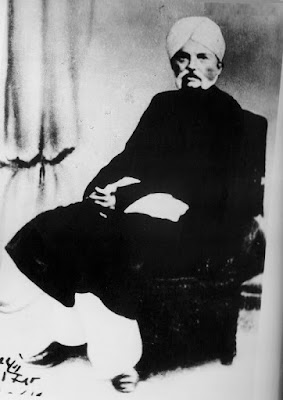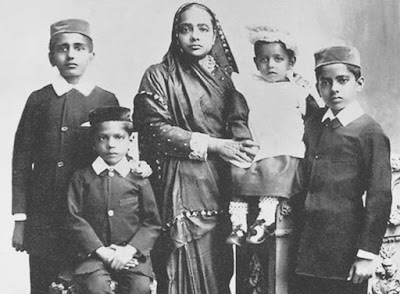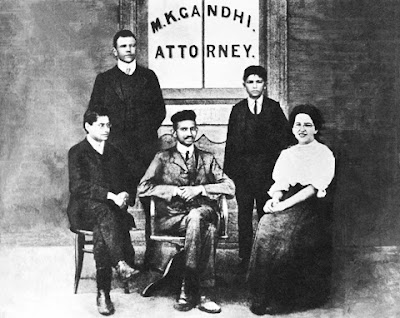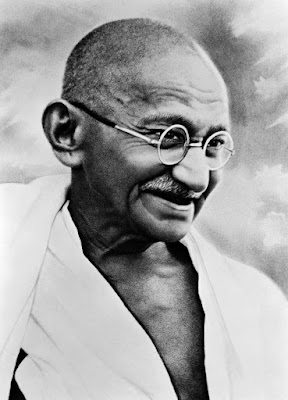Mahatma Gandhi Age, Death, Wife, Parents, Early Life, Carrier, Caste, Family, Biography & More
Mahatma Gandhi Biography
Biography
|
|
Full Name
|
Mohandas
Karamchand Gandhi
|
Childhood Name
|
Manu
or Monia
|
Nick Name
|
Mahatma
|
Gandhi
ji
|
|
Bapu
|
|
Father
of Nation
|
|
Date of Birth
|
2
October, 1869
|
Birth Place
|
Porbandar,
Kathiawar (Now known as Gujarat)
|
Date of Death
|
30
January, 1948
|
Death Place
|
New
Delhi, India
|
Cause of Death
|
Shoot
by Gun (By Nathuram Godse)
|
Age
|
78
Years
|
Height
|
168
cm
|
Marital Status
|
Married
|
Profession
|
Author
|
Philosopher
|
|
Politician
|
|
Advocate
|
|
Freedom
Fighter
|
|
Revolutionary
|
|
Journalist
|
|
Peace
Activist
|
|
Eye Colour
|
Black
|
Hair Colour
|
Bald
|
Nationality
|
Indian
|
Home Town
|
Porbandar,
Gujarat, India
|
Education Qualification
|
Barrister-in-Law
|
School
|
Alfred
High School, Rajkot
|
A
High School, Ahmedabad
|
|
College/University
|
Samaldas
College, Bhavnagar (Now in Gujarat)
|
Inner
Temple, London
|
|
UCL
Faculty of Laws, University, London
|
|
Religion
|
Hinduism
|
Caste
|
Modh
Mania
|
Food Habit
|
Vegetarian
(Quit Non-Veg.)
|
Hobbies
|
Homespun,
Reading Biographies
|
Alcoholic
|
No
(Quit)
|
Marriage Date
|
May,
1833
|
Age at the time of Marriage
|
Mahatma
Gandhi- 13 years
Kasturba
Gandhi- 14 Years
|
Marriage Type
|
Arrange
|
Family
|
|
Wife
|
Kasturba
Gandhi (Kasturbai Makhanji Kapadia), (1869 - 1944)
|
Son(s)
|
Harilal
|
Manilal
|
|
Ramdas
|
|
Devdas
|
|
Daughter(s)
|
Laxmi
(Adopted)(Indian)
|
Madeleine
Slade aka Mirabehn(Adopted) (British)
|
|
Parents
|
Father-
Karamchand Gandhi
|
Mother-
Putlibai
|
|
Brother(s)
|
Laxmidas
Karamchand Gandhi
|
Karsandas
Gandhi
|
|
Sister(s)
|
Raliatbehl
Gandhi
|
Something Favourite Of Mahatma
Gandhi
|
|
Persons
|
Gautama
Buddha
|
Harish
Chandra
|
|
His
mother Putlibai
|
|
Author
|
Leo
Tolstoy
|
Food
|
Boiled
Vegetables
|
Colour
|
Orange
|
Some Famous Books Written by
Mahatma Gandhi
|
|
Title
|
ISBN(Unless Noted Otherwise)
|
All Men are Brothers
|
8172290004
|
Diet and Diet Reform
|
8172290624
|
Gandhi’s Autobiography-
Abridged
|
8172290942
|
The Bhagavad Gita
|
8122200079
|
The Story of my Experiments
with Truth – An Autobiography
|
8172290810
|
Trusteeship
|
8172290918
|
Truth is God
|
8172290039
|
Satyagraha in South Africa
|
0934676038
|
Unto this Last – A Paraphrase
|
-
|
Early Life
From his childhood,
Mahatma Gandhi was very fond of reading stories like Shravan Kumar and Raja
Harishchandra. In his autobiography, he admitted that these stories left an
indelible impression on his mind. He used to act on these stories many times
during his school days. He writes: "I acted Harishchandra several times
without a number." Gandhi's early self-identification as the supreme
values with truth and love is available to these epic characters.
 |
| Young Mahatma Gandhi |
Mahatma Gandhi's
father Karamchand was a Hindu and his mother Putlibai was from a pranami Vaishnava
Hindu family. Mod Baniya was of the caste of Gandhi's father Vaishya. His
mother came from the medieval Krishna devotional-based Pranami tradition, whose
religious texts include the Bhagavad Gita, the Bhagavata Purana and a
collection of 14 texts. Gandhi was very impressed with his mother. She was a
very pious woman.
 |
| Karamchan Gandhi |
In 1874, Gandhi's father Karamchand left Porbandar for a small kingdom in Rajkot, where he
became a consultant to its ruler Thakur Sahab. In 1876, Karamchand became the
Diwan of Rajkot and was succeeded as the Diwan of Porbandar by his brother
Tulsidas. His family rejoined him in Rajkot.
At the age of 9, Gandhi entered a local school
in Rajkot near his home. There he studied the concepts of arithmetic, history,
Gujarati language and geography. At the age of 11, he enrolled in high school
in Rajkot. He was an average student. His only companions were books and school
lessons. He was not interested in sports.
In May 1883, 13-year-old Mohandas was married
to 14-year-old Kasturbai Makhanji Kapadia in the same area with traditional
rituals. Their marriage was a joint event, where their brother and cousin were
also married. Recalling their wedding day, he once said, "As we did not
know much about marriage, for us it meant wearing only new clothes, eating
sweets and playing with relatives." In late 1885, Gandhi's father
Karamchand died. Gandhi was then 16 years old.
 |
| kasturba Gandhi With Her Children |
In November 1887, the
18-year-old Gandhi graduated from high school in Ahmedabad. In January 1888, he
enrolled at Samaldas College in Bhavnagar State, then the sole degree-granting
institution of higher education in the region. But he dropped out and returned
to his family in Porbandar.
Mahatma Gandhi in London
At UCL, Mahatma
Gandhi studied law and jurisprudence and was invited to enroll in the Inner
Temple with the intention of becoming a barrister.
His time in London was influenced by his mother's fast. He tried to adopt
"English" customs, Gandhi was a vegetarian
and he often starved, until he found one of the few vegetarian restaurants in
London. Impressed by the writings of Henry Salt, he joined the London Vegetarian Society.
 |
| Mahatma Gandhi in London |
At the age of 22,
Gandhi was called to the bar in June 1891, but then he had to leave for India,
because his mother had died. His attempts to establish a law practice in Bombay
failed because he was psychologically unable to cross-examine witnesses. He
returned to Rajkot to make a modest living drafting petitions for the
plaintiffs, but was forced to stop when he ran behind Sam Sunny, a British
officer.
Mahatma Gandhi in South Africa
After struggling to
find work as a lawyer in India, Gandhi obtained a one-year contract to perform
legal services in South Africa. In April 1893, he sailed for Durban in the
South African state of Natal. When Gandhi arrived in South Africa, he was
quickly appalled by the discrimination and racial segregation faced by Indian
immigrants at the hands of white British and Boer authorities. Upon his first
appearance in a Durban courtroom, Gandhi was asked to remove his turban. He
refused and left the court instead. The Natal Advertiser mocked him in print as
“an unwelcome visitor.”
 |
| Mahatma Gandhi in South Africa |
Role in Indian Independence
Mahatma Gandhi returned to India in 1915, at the request of Gopal Krishna Gokhale. He gained an
international reputation as a prominent Indian nationalist, theorist and
community organizer. Gandhi joined the Indian
National Congress. Gokhale was a prominent leader of the Congress party.
Gandhi adopted Gokhale's liberal approach based on British Whiggish traditions
and adapted it to look Indian. Gandhi assumed leadership of the Congress in
1920. Tensions escalated until Gandhi demanded immediate independence in 1942
and the British responded by imprisoning him and thousands of Congress leaders.
 |
| Mahatma Gandhi With Pt. Jawahar lal Nehru |
After World War I,
in 1919, Gandhi supported the Ottoman Empire and sought political support from
Muslims in the fight against British imperialism. Before Gandhi's initiative,
communal disputes and religious riots between Hindus and Muslims were common in
British India. With this attempt by Gandhi, after the end of the First World
War, the British government had offered to the Indians a slight improvement
rather than self-government. Gandhi announced his Satyagraha (civil disobedience) intentions. The British colonial
authorities made their counter move by passing the Row law Act to block
Gandhi's movement. By this act, the British government could arrest any
participant who participated in the Satyagraha movement. Gandhi felt that
Hindu-Muslim cooperation was necessary for political progress against the
British. He took advantage of the Khilafat movement, then he campaigned for
Hindu-Muslim unity. After this, Gandhi gained a strong Muslim support. However,
Hindu leaders including Rabindranath Tagore questioned Gandhi's leadership as
they were largely against recognizing or supporting the Sunni Islamic caliphate
in Turkey. After Gandhi's growing Muslim support, he temporarily halted
Hindu-Muslim communal violence, supporting the cause of the Caliphate. By the end
of 1922, the Khilafat movement had collapsed. Turkey's Ataturk had ended the
Caliphate, the Khilafat Movement, and Muslim support for Gandhi largely
disappeared. Muslim leaders and representatives left Gandhi and his Congress.
With his book Hind Swaraj (1909), Gandhi declared at
the age of 40 that British rule was established with the cooperation of Indians
in India and if Indians refused to side with the British, British rule would
collapse. Will go and swaraj will come. Gandhi went to a meeting in Madras in
September 1921 with Dr. Annie Besant. Earlier, in Madurai, on 21 September
1921, Gandhi first adopted the loi-cloth
as a symbol of his identification with the poor of India. In February 1919, at
a meeting of Satyagraha going on in Delhi, British officials set fire to
unarmed people, where thousands of people had burnt to death.
In 1906, Gandhi
launched his first mass civil disobedience campaign, which he called the "Satyagraha", in response to
new restrictions on the rights of Indians by the South African Transvaal
government, including a refusal to recognize Hindu marriage. After years of
protests, the government jailed hundreds of Indians, including Gandhi, in 1913.
Under pressure, the South African government accepted conciliation talks by Gandhi
and General John Christian Smuts that included the recognition of Hindu
marriage and the abolition of a state tax for Indians.
Gandhi opposed the Salt Acts of Britain for his return to
active politics in 1930, which not only prohibited Indians from collecting or
selling salt, but a heavy tax was imposed which hit the country's poor
particularly harshly. Gandhi planned a new Satyagraha expedition, The Salt March (Dandi Yatra), entering the
Arabian Sea up to a distance of 390 kilometers / 240 miles, where he would
collect salt in symbolic defence of the government's monopoly. Wearing a
homespun white shawl and sandals and carrying a stick, Gandhi embarked on his
religious retreat in Sabarmati on March 12, 1930 with a few dozen followers.
 |
| Mahatma Gandhi in Salt March |
By
the time he reached the coastal city of Dandi 24 days later, the number of
marchers had increased, and Gandhi broke the law by making salt from evaporated
seawater. The 60,000 Indians who joined the Dandi Yatra were imprisoned for
breaking the Salt Acts, including Gandhi, who was imprisoned in May 1930.
Nevertheless, opposition to the Salt Act made Gandhi an accomplished figure
throughout the world. He was named Time magazine's "Man of the Year"
for 1930.



No comments:
Please do not enter any spam link in the comment box.